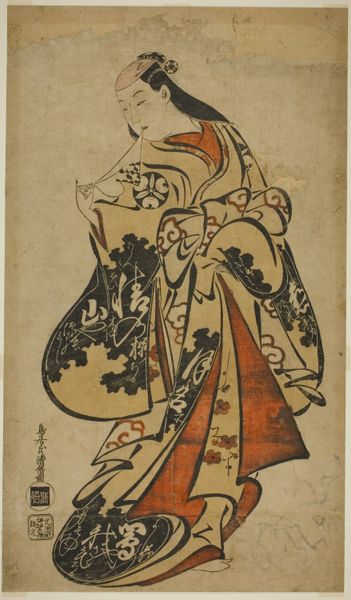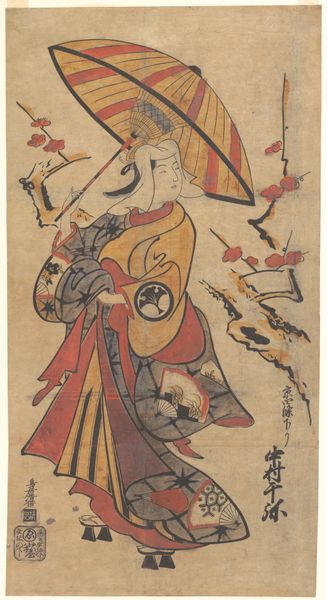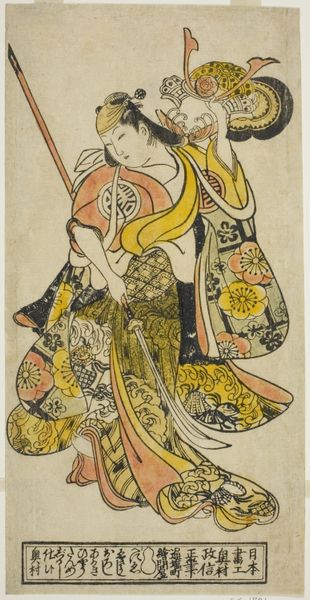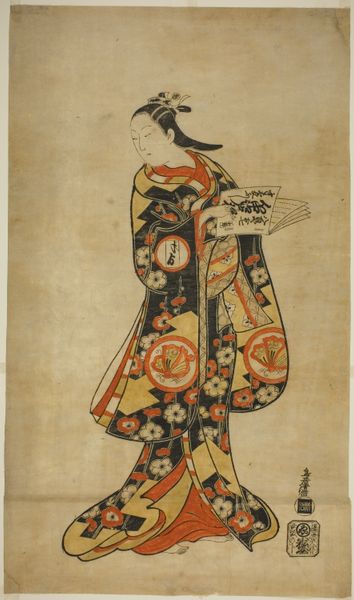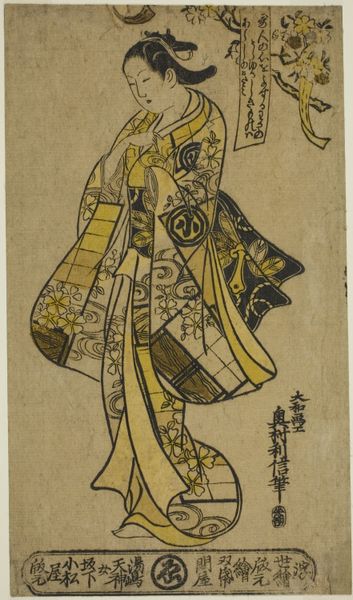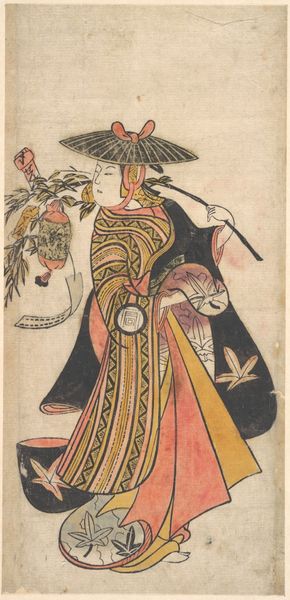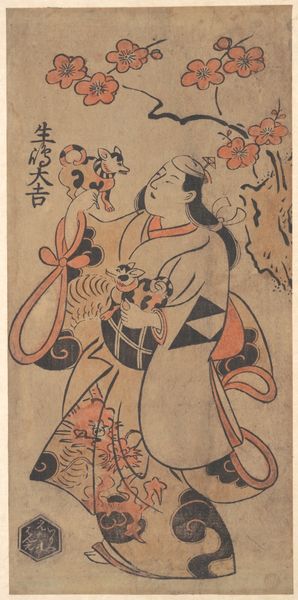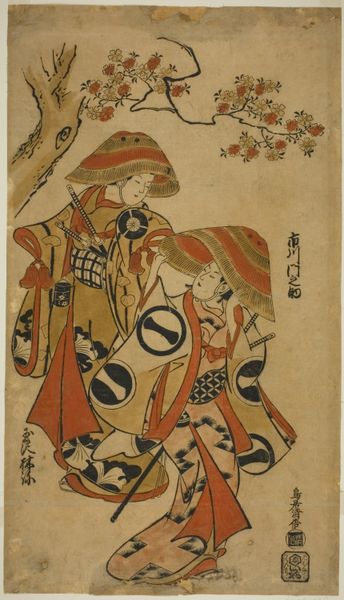
print, ink, woodblock-print, woodcut
#
portrait
#
ink drawing
# print
#
asian-art
#
ukiyo-e
#
figuration
#
ink
#
woodblock-print
#
woodcut
Dimensions: 56.1 × 23.3 cm (22 × 12 5/8 in.)
Copyright: Public Domain
Editor: This is "The Actor Fujimura Handayu II as Oiso no Tora" by Torii Kiyomasu I, a woodblock print made around 1715. I find the flowing lines of the kimono really striking; the artist captured such graceful movement with such simple lines. What's your take on this piece? Curator: It’s fascinating to view this ukiyo-e print not just as a portrait, but as a social document. It’s less about the actor’s individual likeness, and more about his *representation*. Consider the historical context: Kabuki theatre was hugely popular, but actors, despite their fame, occupied a lower social stratum. Editor: So, this image plays with class? Curator: Precisely! The actor is idealized, almost elevated through the artistic rendering of his figure and dress. We can explore this through the lens of performance theory – how gender, class, and identity were consciously *performed* both on stage and in these accompanying artworks. Editor: I see what you mean. The elaborate kimono seems almost like a costume in itself, emphasizing a constructed identity. Curator: Exactly! Think about the red and black ink, the bold lines— these aren’t just aesthetic choices. They amplify the performative aspect of the actor's identity. Ukiyo-e prints provided a space where these fluid social identities could be explored. What does this image say about the place of female characters and female impersonators in this social fabric? Editor: Wow, I never thought about it that way. Now it seems there's more to the art form than the print itself; its intertwined to so many cultural themes and societal roles. Curator: Precisely, and approaching art with those contexts in mind brings another dimension of life to the work.
Comments
No comments
Be the first to comment and join the conversation on the ultimate creative platform.
